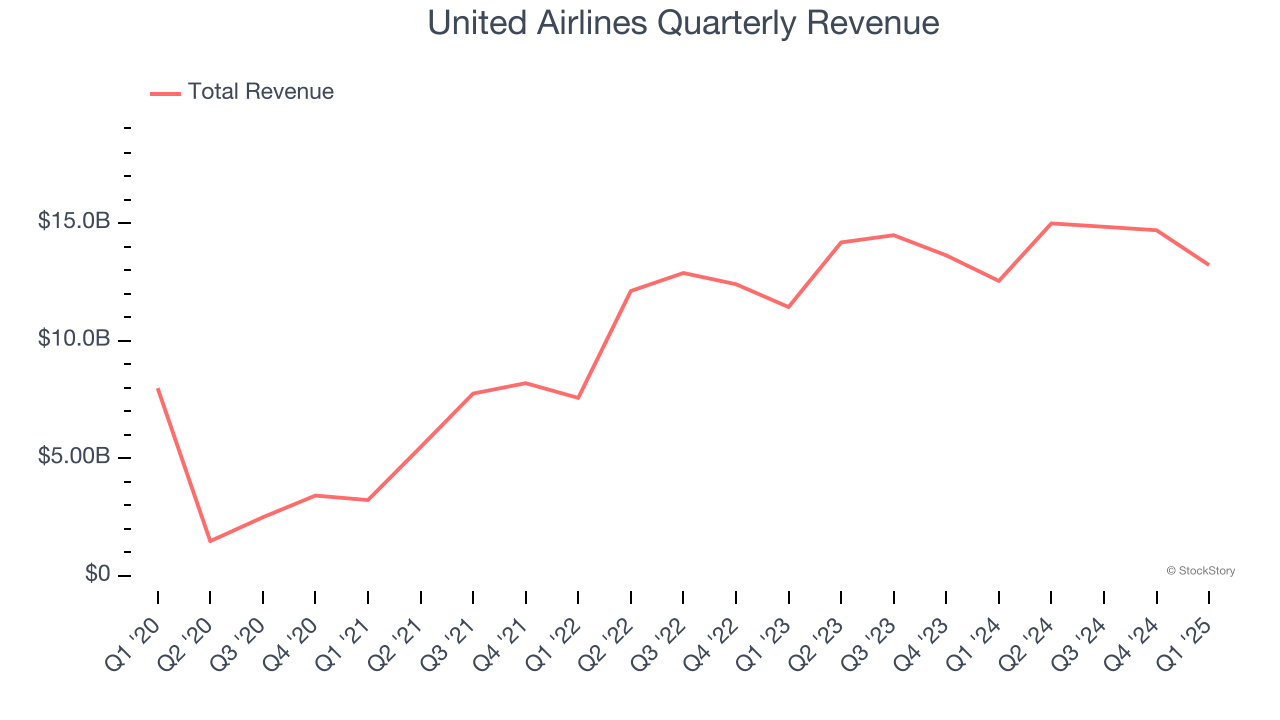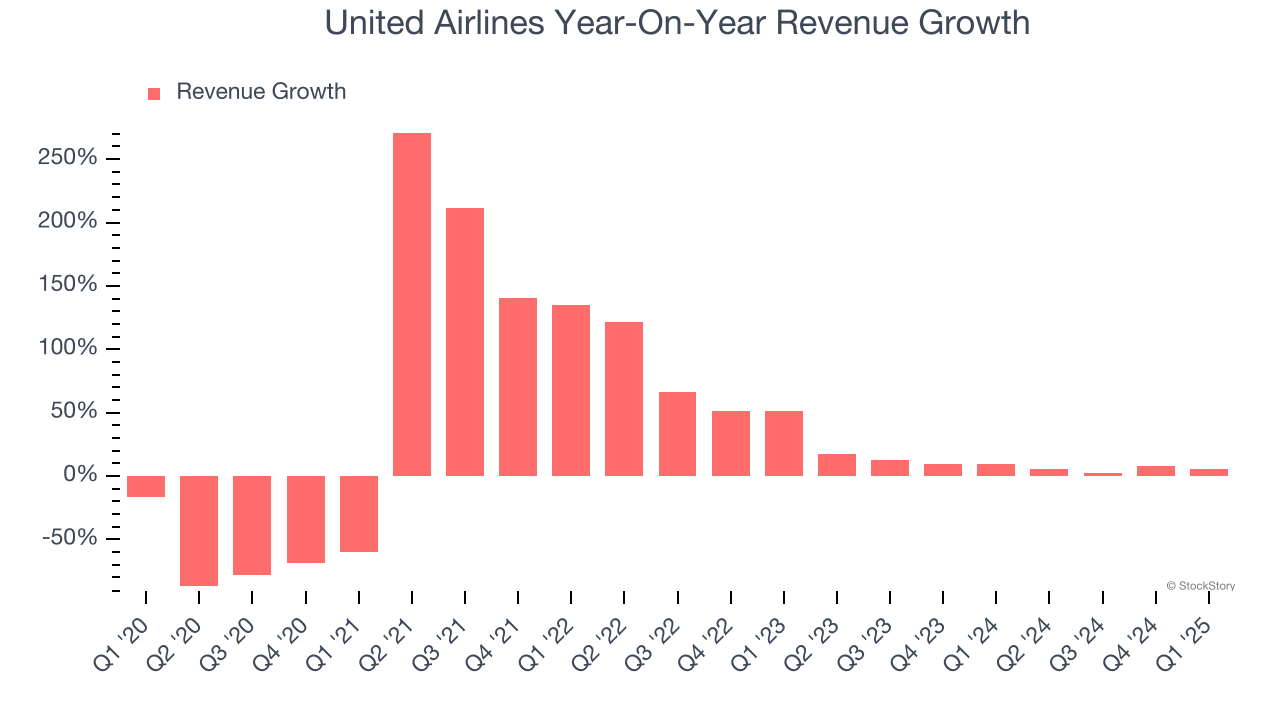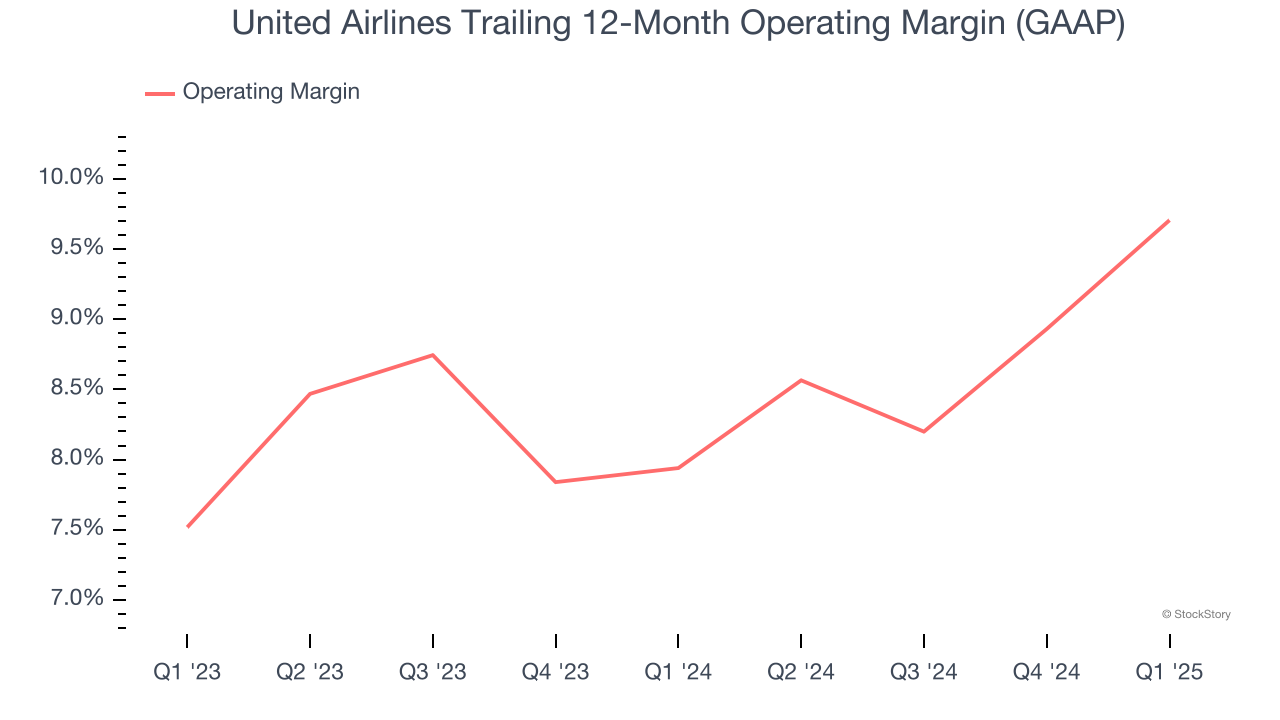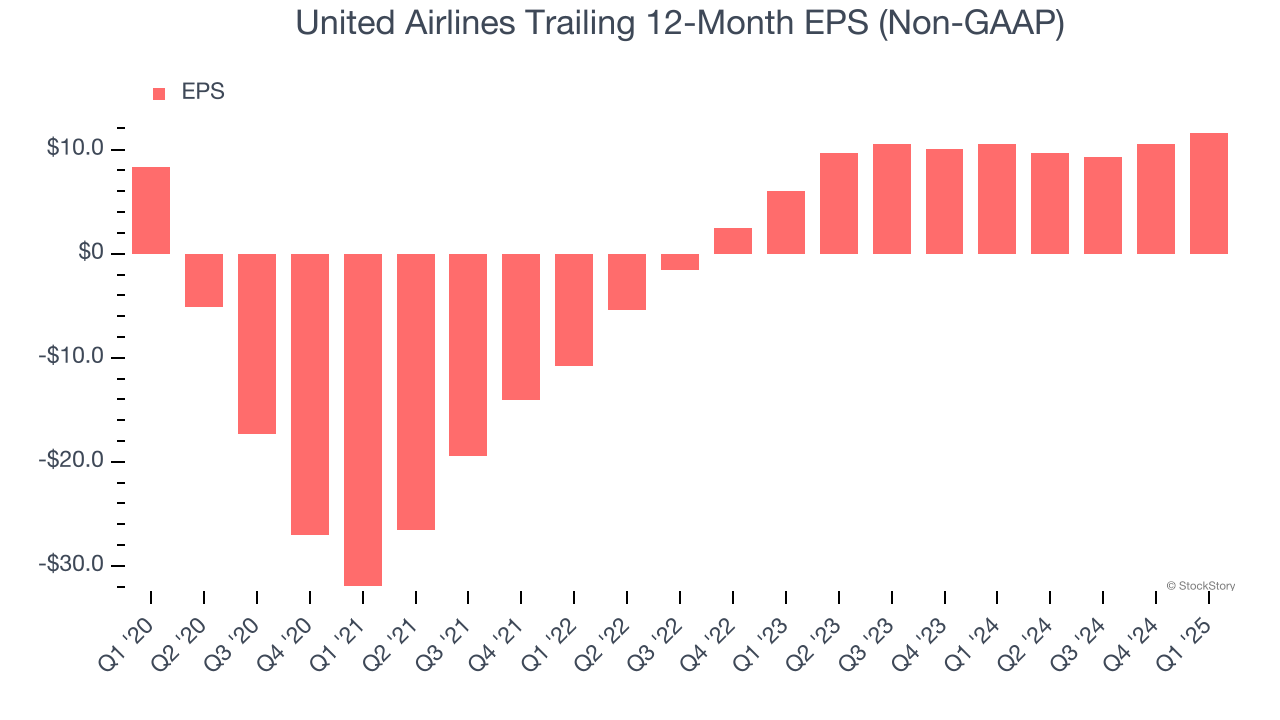
Airline company United Airlines Holdings (NASDAQ: UAL) reported Q1 CY2025 results exceeding the market’s revenue expectations, with sales up 5.4% year on year to $13.21 billion. Its non-GAAP profit of $0.91 per share was 23.8% above analysts’ consensus estimates.
Is now the time to buy United Airlines? Find out by accessing our full research report, it’s free.
United Airlines (UAL) Q1 CY2025 Highlights:
- Revenue: $13.21 billion vs analyst estimates of $13.13 billion (5.4% year-on-year growth, 0.6% beat)
- Adjusted EPS: $0.91 vs analyst estimates of $0.74 (23.8% beat)
- Adjusted EBITDA: $1.26 billion vs analyst estimates of $1.28 billion (9.6% margin, 1.2% miss)
- Operating Margin: 4.6%, up from 0.8% in the same quarter last year
- Free Cash Flow Margin: 18.7%, up from 11.8% in the same quarter last year
- Revenue Passenger Miles: 59.52 billion, up 2.09 billion year on year
- Market Capitalization: $21.53 billion
"Our strategy coming out of the COVID pandemic was simple: Build the best airline in the world to attract brand-loyal customers. The people of United Airlines have executed and built that airline," said United CEO Scott Kirby.
Company Overview
Founded in 1926, United Airlines Holdings (NASDAQ: UAL) operates a global airline network, providing passenger and cargo air transportation services across domestic and international routes.
Travel and Vacation Providers
Airlines, hotels, resorts, and cruise line companies often sell experiences rather than tangible products, and in the last decade-plus, consumers have slowly shifted from buying "things" (wasteful) to buying "experiences" (memorable). In addition, the internet has introduced new ways of approaching leisure and lodging such as booking homes and longer-term accommodations. Traditional airlines, hotel, resorts, and cruise line companies must innovate to stay relevant in a market rife with innovation.
Sales Growth
Reviewing a company’s long-term sales performance reveals insights into its quality. Even a bad business can shine for one or two quarters, but a top-tier one grows for years. Unfortunately, United Airlines’s 6.8% annualized revenue growth over the last five years was sluggish. This fell short of our benchmark for the consumer discretionary sector and is a poor baseline for our analysis.

We at StockStory place the most emphasis on long-term growth, but within consumer discretionary, a stretched historical view may miss a company riding a successful new property or trend. United Airlines’s annualized revenue growth of 8.8% over the last two years is above its five-year trend, but we were still disappointed by the results. 
We can better understand the company’s revenue dynamics by analyzing its number of revenue passenger miles, which reached 59.52 billion in the latest quarter. Over the last two years, United Airlines’s revenue passenger miles averaged 8.7% year-on-year growth. Because this number aligns with its revenue growth during the same period, we can see the company’s monetization was fairly consistent. 
This quarter, United Airlines reported year-on-year revenue growth of 5.4%, and its $13.21 billion of revenue exceeded Wall Street’s estimates by 0.6%.
Looking ahead, sell-side analysts expect revenue to grow 3.8% over the next 12 months, a deceleration versus the last two years. This projection doesn't excite us and suggests its products and services will face some demand challenges.
Software is eating the world and there is virtually no industry left that has been untouched by it. That drives increasing demand for tools helping software developers do their jobs, whether it be monitoring critical cloud infrastructure, integrating audio and video functionality, or ensuring smooth content streaming. Click here to access a free report on our 3 favorite stocks to play this generational megatrend.
Operating Margin
Operating margin is a key measure of profitability. Think of it as net income - the bottom line - excluding the impact of taxes and interest on debt, which are less connected to business fundamentals.
United Airlines’s operating margin has been trending up over the last 12 months and averaged 8.8% over the last two years. The company’s higher efficiency is a breath of fresh air, but its suboptimal cost structure means it still sports mediocre profitability for a consumer discretionary business.

This quarter, United Airlines generated an operating profit margin of 4.6%, up 3.8 percentage points year on year. This increase was a welcome development and shows it was more efficient.
Looking ahead, Wall Street expects United Airlines to become less profitable. Analysts are expecting the company’s trailing 12-month operating margin of 9.7% to decline to 8.2% in the coming year.
Earnings Per Share
We track the long-term change in earnings per share (EPS) for the same reason as long-term revenue growth. Compared to revenue, however, EPS highlights whether a company’s growth is profitable.
United Airlines’s unimpressive 6.8% annual EPS growth over the last five years aligns with its revenue performance. On the bright side, this tells us its incremental sales were profitable.

In Q1, United Airlines reported EPS at $0.91, up from negative $0.15 in the same quarter last year. This print easily cleared analysts’ estimates, and shareholders should be content with the results. Over the next 12 months, Wall Street expects United Airlines’s full-year EPS of $11.64 to shrink by 9.2%.
Key Takeaways from United Airlines’s Q1 Results
We enjoyed seeing United Airlines beat analysts’ revenue and EPS expectations this quarter. Overall, this quarter had some key positives. The stock traded up 6.8% to $71.61 immediately following the results.
United Airlines put up rock-solid earnings, but one quarter doesn’t necessarily make the stock a buy. Let’s see if this is a good investment. We think that the latest quarter is only one piece of the longer-term business quality puzzle. Quality, when combined with valuation, can help determine if the stock is a buy. We cover that in our actionable full research report which you can read here, it’s free.

